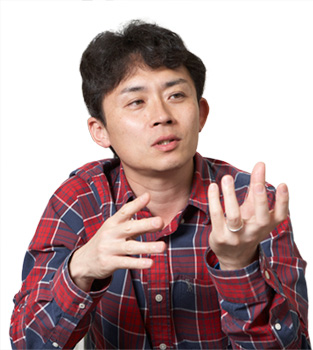
Kohtaro Ujiie
Associate Professor Graduate School of Life and Environmental Sciences, University of Tsukuba
Choosing from a limited number of options
The second target of this expedition was the collection of geological samples from the fault zone.
The second target of this expedition was the collection of geological samples from the fault zone.
May 13 was when the drilling to obtain geological samples started. The LWD data function as a map for exploring the borehole, as the data can be used to pinpoint the position of a fault. At first the plan had been to position the hole for geographical samples away from the first hole, so that the heat generated when drilling for the samples didn’t impact on the temperature sensors. But since the temperature sensors could not be installed during this expedition, a hole for the collection of geological samples could be drilled close to the LWD hole.
“This became a great advantage,” tells Kohtaro Ujiie from the University of Tsukuba, leader of the Structural Geology team awaiting the arrival of the geological samples. Subseafloor layers are inclined. If, as planned at first, drilling had been done at a distance from the LWD hole, the difference with the LWD data would be that much larger. But because drilling could now be done near the LWD hole, the LWD data could be used as is.
